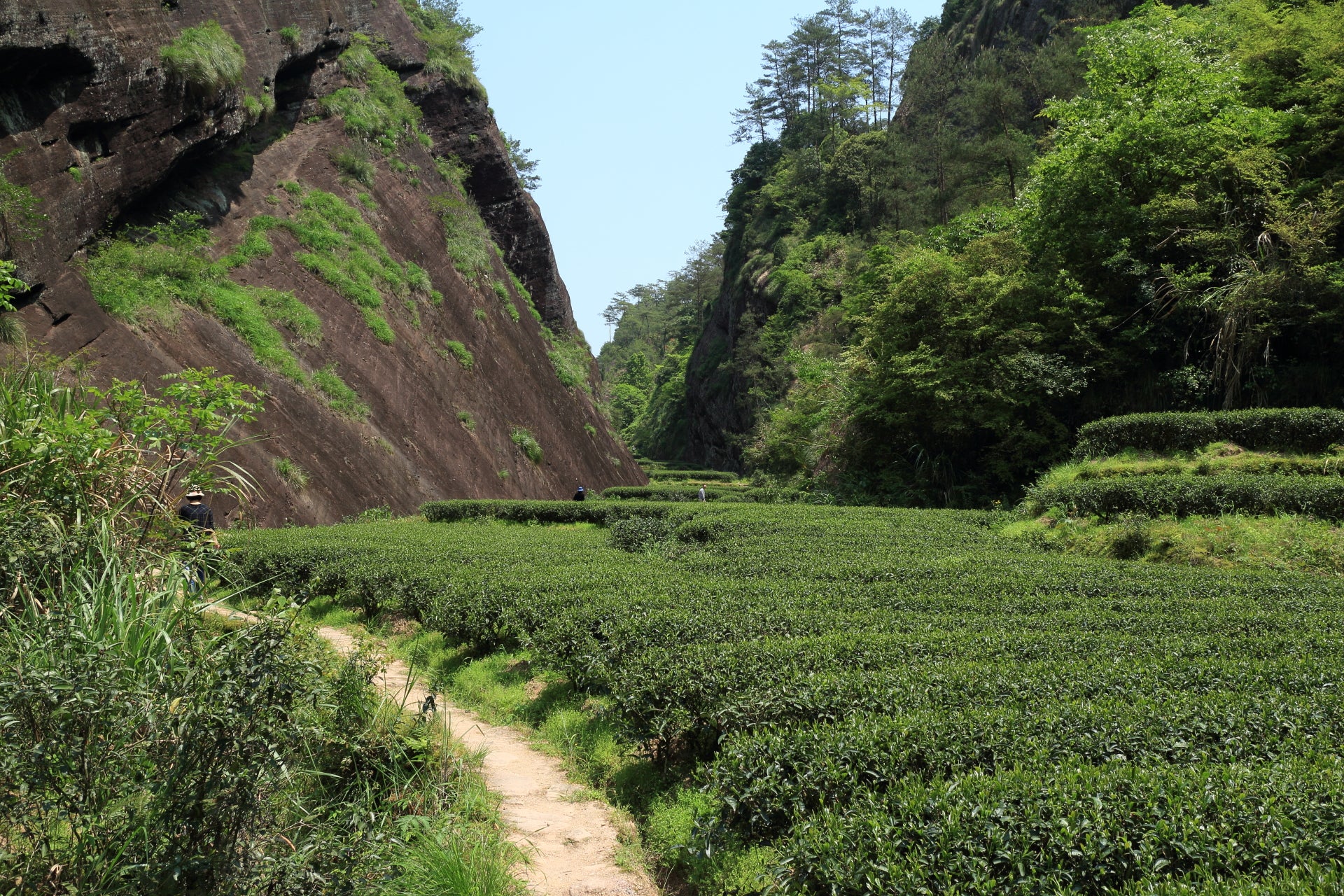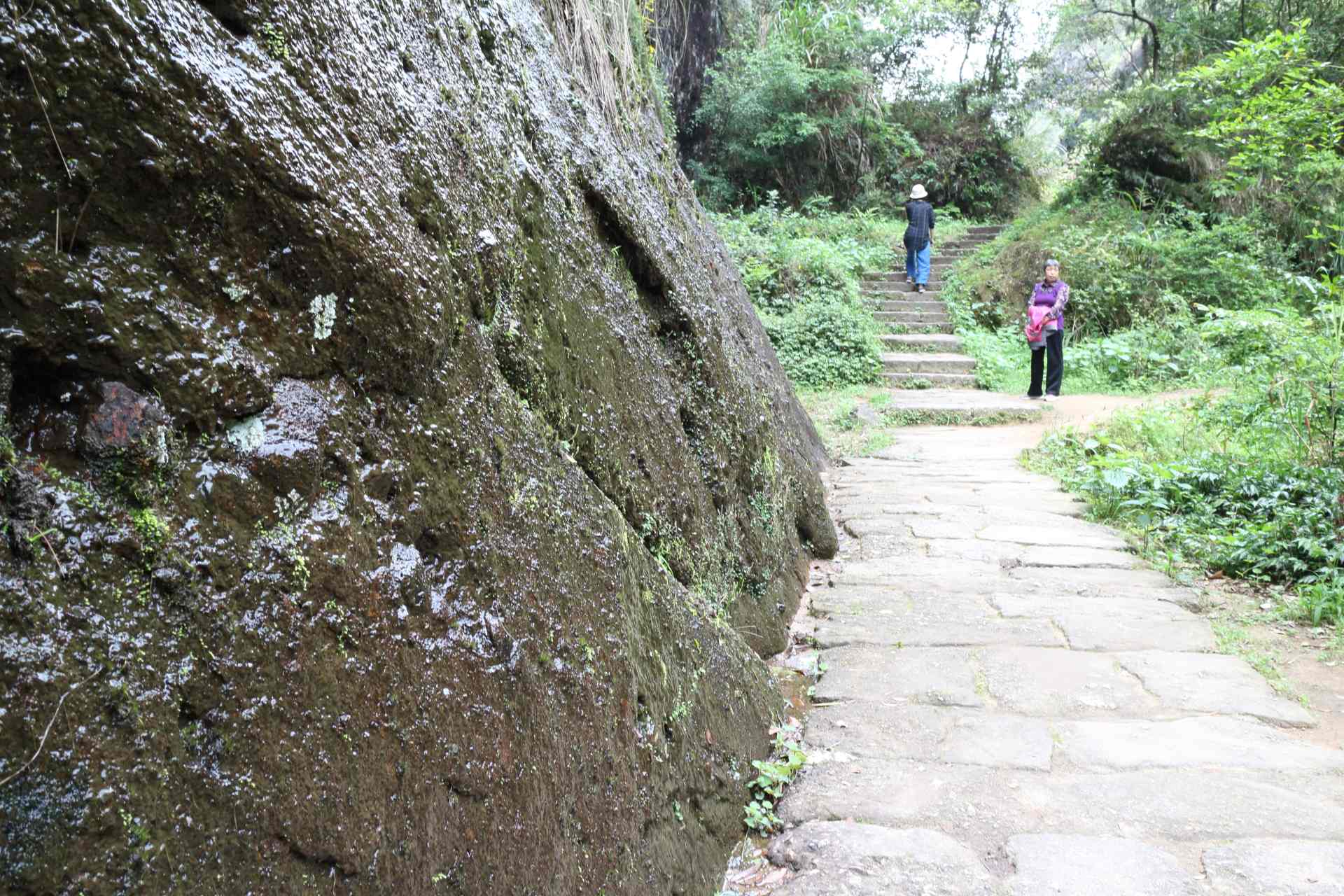Da Hong Pao
To many tea drinkers in China, the name Da Hong Pao is synonymous to the entire category of Wuyi Yan Cha, and for good reason. Not only is it one of the Si Da Ming Cong—the four famous and classic types of Yan Cha (Da Hong Pao, Tie Luo Han, Bai Ji Guan, Shui Jin Gui)—it’s also a label that’s commonly used for a variety of Yan Cha blends. However, there is also a third category associated with this illustrious name: tea made from the Qi Dan cultivar, which is cloned from one of the six mother bushes of the original Da Hong Pao.
This Qi Dan Da Hong Pao delights the senses with its captivating fragrance—gentle at first, its twisted leaves soon bloom into a bouquet of flowers and spices. Imbibing the tawny tea soup reveals the soothing flavour of clover honey, joined by the taste of dried medicinal herbs to create a nourishing potion. As one would expect from a Yan Cha with this pedigree, a light sensation of minerals on the tongue harkens back to its origins throughout the entire drinking experience. This tea is lighter in nature, with an elegant aroma and flavours that please the palate, making you want to keep pouring steep after steep after steep.
Written by Sigi
- ORIGIN: Dashuikeng, Wuyishan, Nanping, Fujian, China
- MEANING: Big red robe (da hong pao)
- CULTIVAR: Qi Dan
- HARVEST TIME: 20 May 2024
- ROASTING: Three times, most recently November 2024
- TASTE: Clover honey, minerals, medicinal herbs
- Quantity: 6g / 500ml
- Water temperature: 90°C
- Infusion time: 5 min
- Quantity: 3g / 100ml
- Water temperature: 90°C
- 4 infusions: 45, 60, 60, 90 sec
For best results in gongfu cha, brew in the traditional gaiwan or in a Yixing teapot. Too high water temperature would burn the leaves, resulting in bitter taste.
Additional Information
Authentic Wuyi Yan Cha is produced in the Wuyi Mount region, a UNESCO natural heritage site. The dramatic gorges of the Nine Bend River are surrounded by a largely intact subtropical forest and smooth cliffs of black-brownish rocks. The tea plants grow in narrow valleys, next to the cliffs, in a mineral-rich soil.
Today Wuyi Yan Cha is one of the most valued teas in China. Because it has become a status symbol, many wealthy Chinese are willing to pay a fortune for it without even knowing how a proper Wuyi Yan Cha should taste. The result has been prices inflating to unjustified level and quality often sacrificed for quantity.
Unique to the Wuyi Yan Cha is a mineral savor coming from the soil and the surrounding cliffs. Being the oolong with the highest fire finish, fresh Yan Cha may as a result be strong and pungent. Sharpness and too-prominent astringency subside upon ageing. Premium high-fire Yan Cha tastes better after a few years of storage. Use a Yixing teapot to soften the tea, should it be too astringent for your palate.
The overall tasting profile is rich, complex, and deep. Depending on cultivar and environment, the mineral-roasted flavor is refined by floral, fruity, nutty or woody accents.










